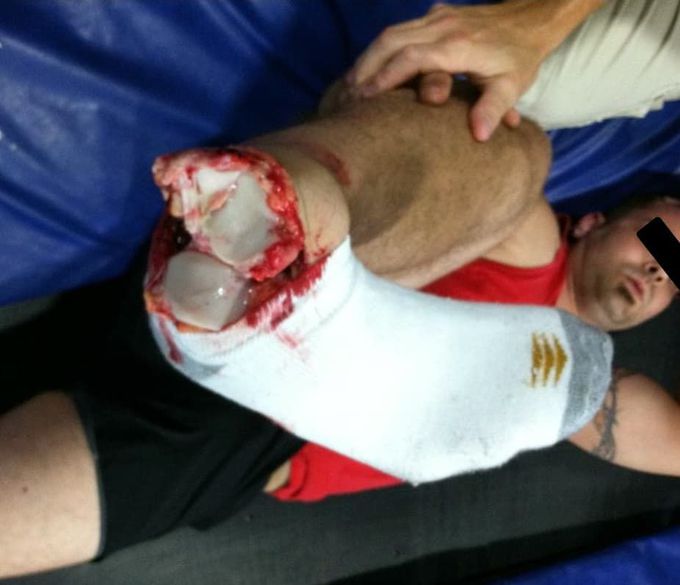


Inversion injury to his right ankle after a failed landing on a trampoline.
This patient went to indoor trampoline park. The patient presented after sustaining an inversion injury to his right ankle after a failed landing on a trampoline. On examination there was a large lacerated wound over the dorsolateral aspect of the right ankle. The distal articular surfaces of the fibula and the tibia were exposed. Additional information was unfortunately not available. Ankle dislocations do not happen spontaneously but are a result of a trauma. Forces are placed on the ankle that cause the bones to fracture or the ligaments to tear, resulting in the dislocation injury. The ankle is an inherently stable joint and the direction of the dislocation depends upon the position of the foot and where the force arises.Most commonly, a dislocated ankle is associated with fractures of the distal ends of the tibia and fibula (called the malleolus) in association with damage to the ligaments that help support the ankle joint.Previous ankle sprains, medial malleolar hypoplasia, weakness of the peroneal muscles and ligamentous laxity are predisposing factors for dislocation.

